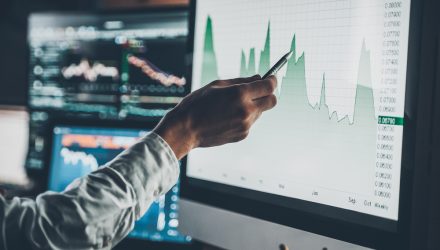As fear ramps up and markets were sent reeling, ETFs that track the CBOE Volatility Index, or so-called VIX, surged to their highest levels in fourth months, testing their long-term resistance.
Among the best performing non-leveraged ETFs of Wednesday, the iPath Series B S&P 500 VIX Short Term Futures ETN (NYSEArca: VXX) increased 11.7%, ProShares VIX Short-Term Futures ETF (NYSEArca: VIXY) advanced 11.3% and VelocityShares Daily Long VIX Short-Term ETN (NYSEArca: VIIX) gained 12.3% while the CBOE Volatility Index jumped 17.7% to 32.4 and touched its highest level since December 2018. Furthermore, the VIX-related exchange traded products were hovering just below their long-term resistance at the 200-day simple moving average. Potential investors should keep in mind that VIX-related exchange traded products track VIX futures and not the spot price.
VIX options continued to rally on Wednesday in response to growing fears of a coronavirus outbreak that could turn into a pandemic and drag on the global economy.
“Everyone is now trying to assess what the economic impact will be,” Neil Dwane, global strategist at Allianz Global Investors, told the Wall Street Journal. “The U.S. is looking at Europe and Japan as evidence of how the world is responding.”
Volatility typically rises when stocks pullback, so owning volatility is seen as a type of market insurance. The Volatility Index, or VIX, an instrument created by the Chicago Board Options Exchange (CBOE), is a real-time market index that represents the market’s expectation of a month period of forward-looking volatility. In most cases, the higher the volatility, the riskier the security.
Derived from the price inputs of the S&P 500 index options, the VIX provides a measure of market risk and investors’ sentiments. It is also known by other names like “Fear Gauge” or “Fear Index,” as investors, research analysts and portfolio managers generally look at VIX values as a way to measure market risk, fear and stress before they take investment decisions.
Reflecting on the heightened market fears over the near-term outlook of the equity markets, VIX futures were now inverted or in backwardation where the spot price was trading above near-term futures prices. Currently, shorter-term contracts are more expensive than longer ones and by a steep margin in the first two contracts for March and April, according to the WashingtonPost. Once conditions normalize, the VIX futures market should return to contango.
For more information on the markets, visit our current affairs category.








